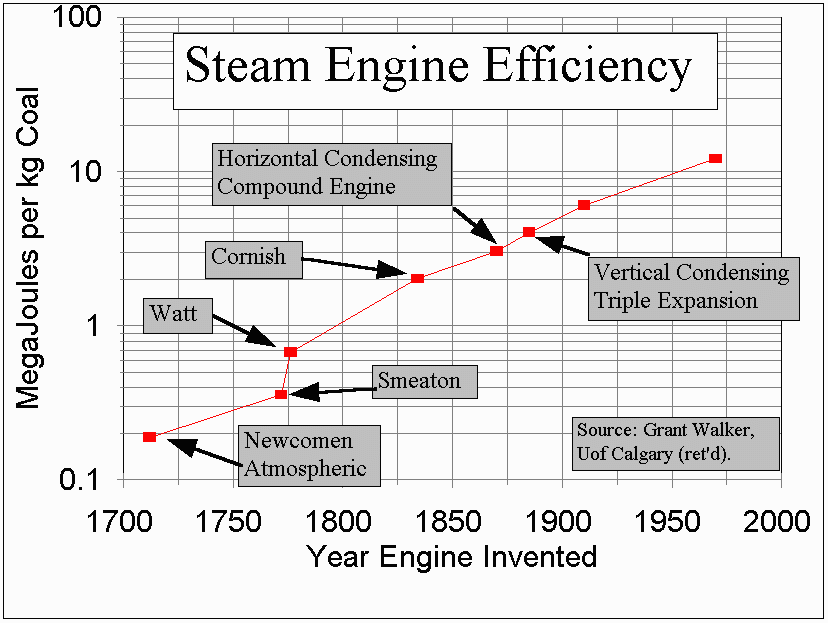
For the counter-argument, I am dependent on the patient research of Dr. Grant Walker, who retired in 1995 from the Mechanical Engineering Dept. of the University of Calgary. Dr. Walker was an enthusiastic student of the history of his profession.
In displays at the University showing models of various coal-fired steam engines, Dr. Walker also provided the raw data for the graph below, which clearly shows a log relationship between the work-efficiency of coal-fired engines and time - an exponential increase.

(For all the data points, please download the spreadsheet file, which is in the lowest-common-denominator old "Lotus 123" format.)
Granted, the "doubling time" of this technology is 60 years, not 1.5 - for almost 300 years, it has taken a human lifetime to appreciate the changes occurring to any given technology such as steamships, power generation, or trains. Rudyard Kipling wrote of this being noted by "an old steam engineer" in 1893, in "MacAndrew's Hymn":
-- the auld Fleet Engineer
That started as a boiler-whelp - when steam and he were low.
I mind the time we used to serve a broken pipe wi' tow'l!
Ten pound was all the pressure then - Eh! Eh! - a man wad drive;
An' here, our workin' guages give one hunder sixty-five!
We're creepin' on wi' each new rig - less weight an' larger power;
There'll be a loco-boiler next an' thirty mile an hour!
Thirty an' more. What I ha' seen since ocean-steam began
Leaves me no doot for the machine: but what about the man?
One salient that sticks up in the graph is that Mr. Watt's steam engine creates a nearly vertical "blip" in the otherwise steady progression - vertical even on a log graph. Many people today assume Watt invented the steam engine. It was invented in his grandfather's time - but Watt's invention was an improvement to a degree that in all other centuries has taken 60 years. He didn't invent it, but he did advance it from rich-man's toy to industrial powerhouse at a stroke.